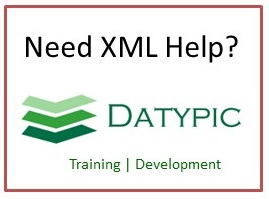GetReceiveDeliveryDataAreaType
Complex type information
Namespace: http://www.openapplications.org/oagis/10
Schema document: GetReceiveDelivery.xsd
Properties: ID: oagis-id-0cdcc84152ff4b3f8dae3408af37ca16
Content
- Sequence [1..1]
- Get [1..1] The Get verb is to communicate to a business software component a request for an existing piece or pieces of information to be returned. The Get may be paired with most of the nouns defined in the OAGIS specification.The response to this request is the Show verb. The behavior of a BOD with a Get verb is quite predictable across the nouns it is paired with.The Get is designed to retrieval of information by using that information's primary retrieval field, or key field. The Get verb may also be used to request several documents at once. Selection Criteria:There are two types of selection capabilities for most BOD's that use the Get verb.1) The first selection capability is called Field-Based Selection. Within a Get-based Business Object Document, the first Data Type that occurs in a specific BOD structure is commonly used to provide the Field-Based Selection criteria. This is always defined within the specific BOD and is commonly the required fields for that specific Data type.The Field-Based Selection enables the requester to provide a value or values (in the case of multiple required Field Identifiers), in the required fields. Then the responding component uses those values to find and return the requested information to the originating business software component.2) The second type of selection capability for Get-based BODs is called Data Type Selection. Data Type selection enables the requester to identify which Data Types within the noun are requested to be returned in the response. The use of this capability is described for each corresponding Data Type for all BODs that use the Get verb. The Data Types are identified for retrieval within the Get instance of a BOD by including the name of the Data Type in the meta data but without any Field Identifiers or Segments identified within the Data Type. This will signify to the responding application that all of the data that corresponds to that Data Type is to be included in the response.If the Data Type is not requested, the Data Type identifier is not included in the Get request and this will signify to the responding component that the Data Type is not to be returned.
- ReceiveDelivery [1..*] Represents a transaction for the receiving of goods or services. It may be used to indicate receipt of goods in conjunction with a purchase order system.The Delivery document contains CHARGE and DISTRIBUTN elements at various levels to support the assessment of receiving service or compliance penalty charges. Several large retailers that demand receiving efficiency commonly assess penalty charges for supplier deliveries that are not compliant with the retailer's policies. Charges may be incurred for deliveries, ship units or items that contain discrepancies from what was ordered or electronically manifested, for improper labeling of items and ship units and the incorrect packing or loading of ship units.
Attributes
None
Used by
- Element DataArea



